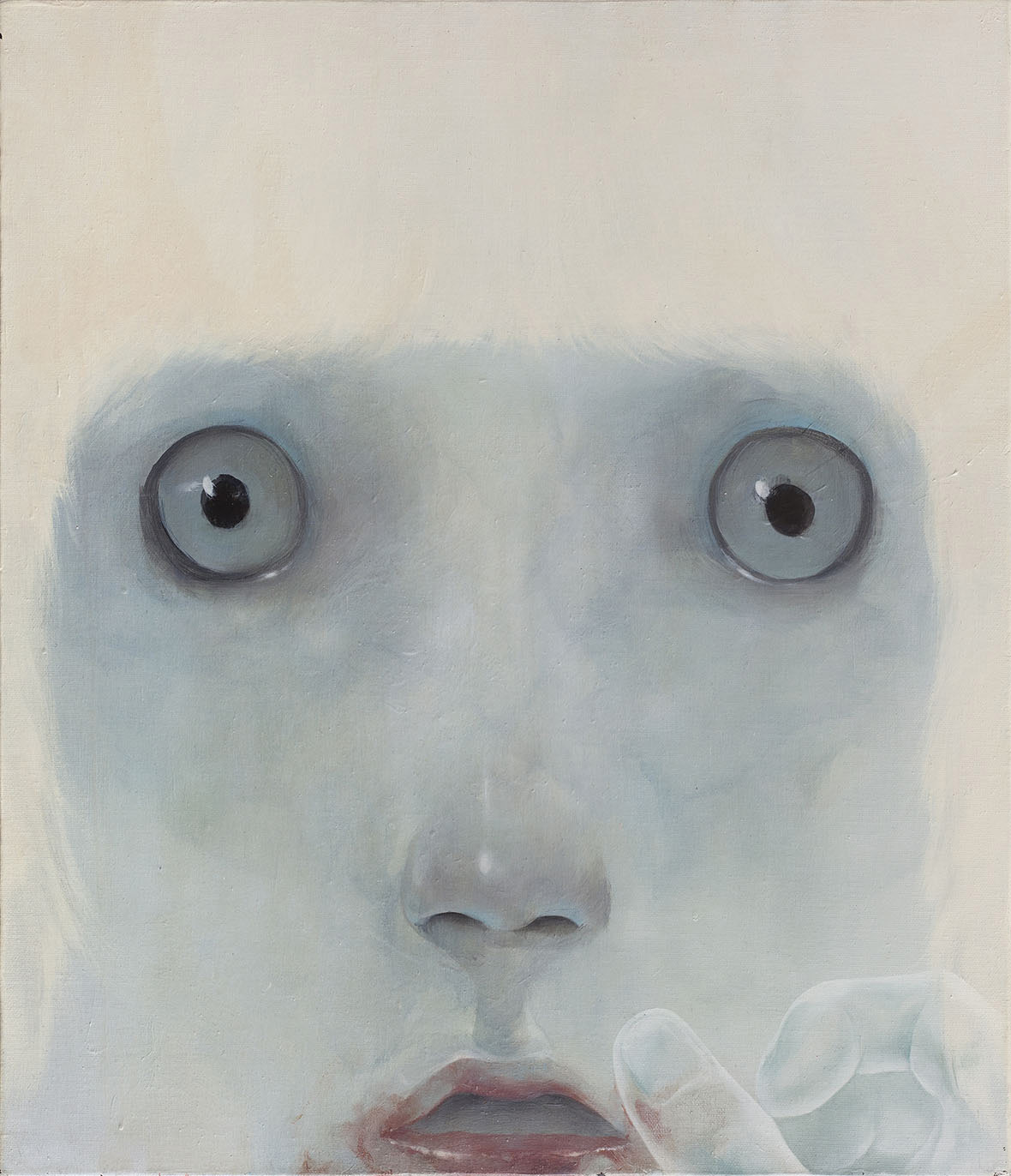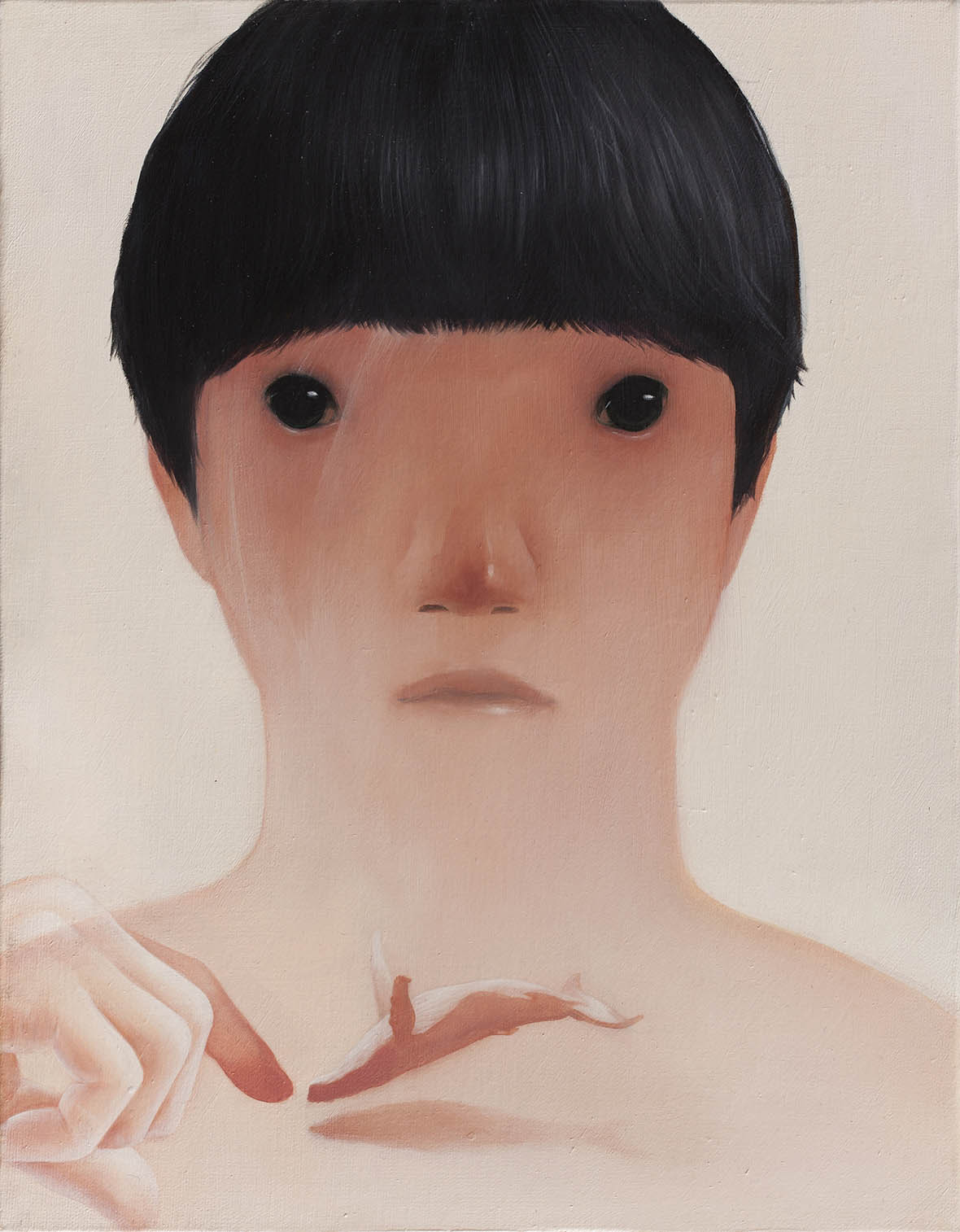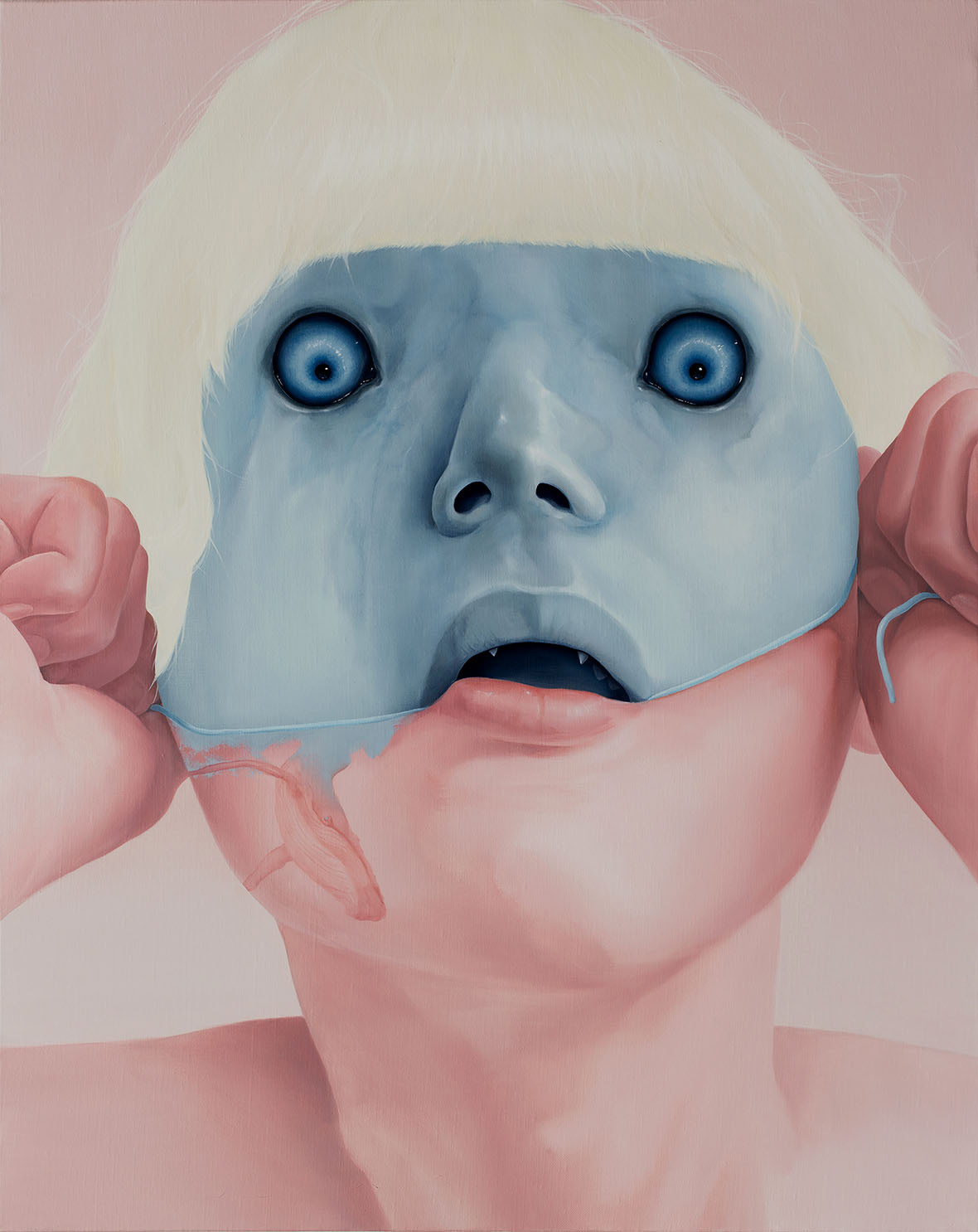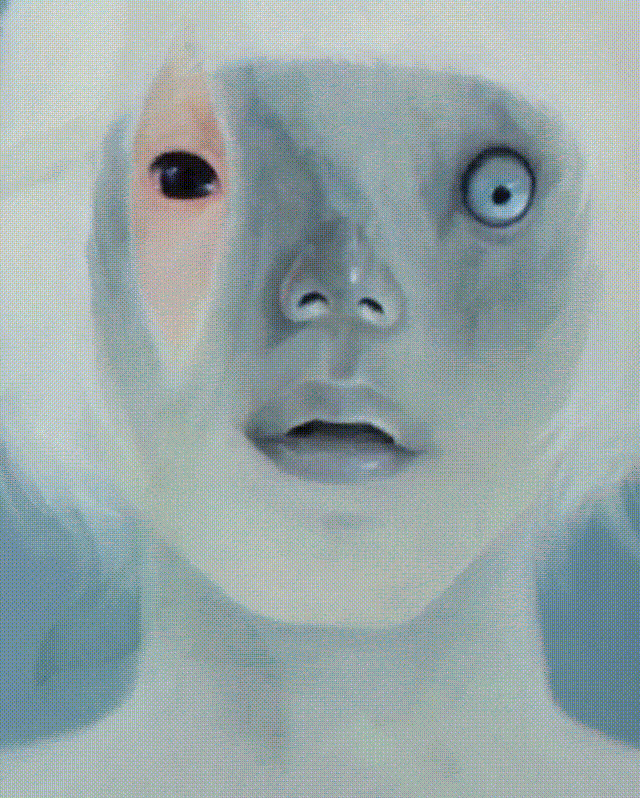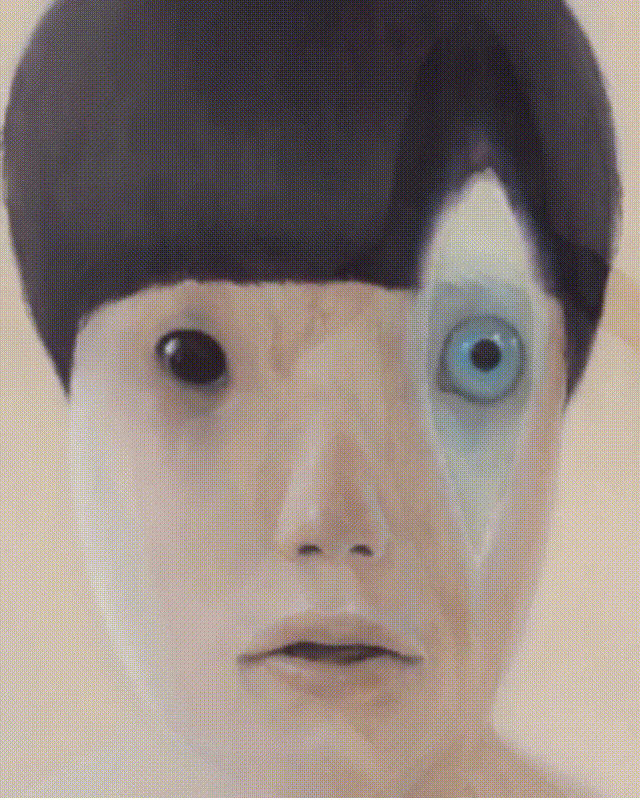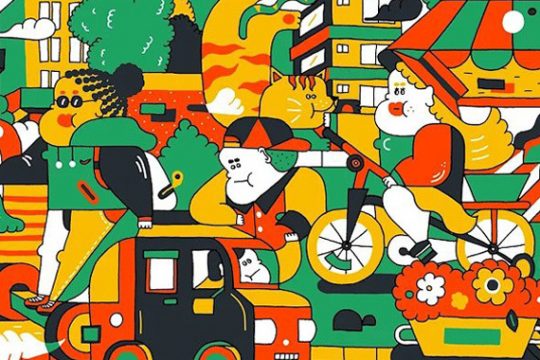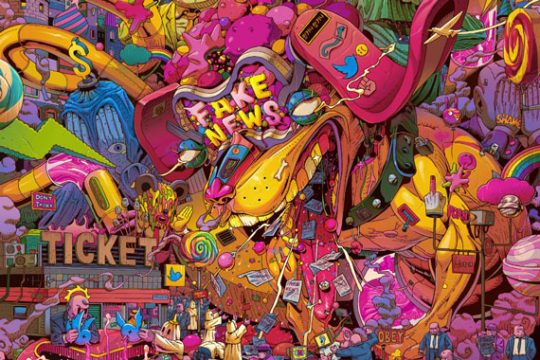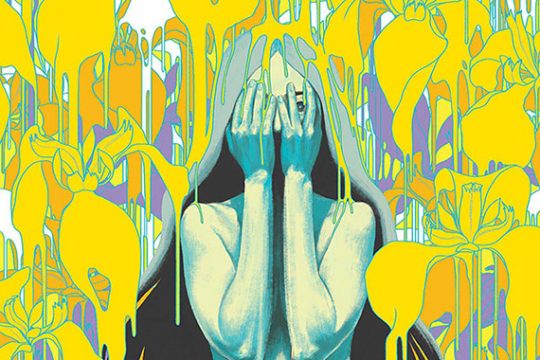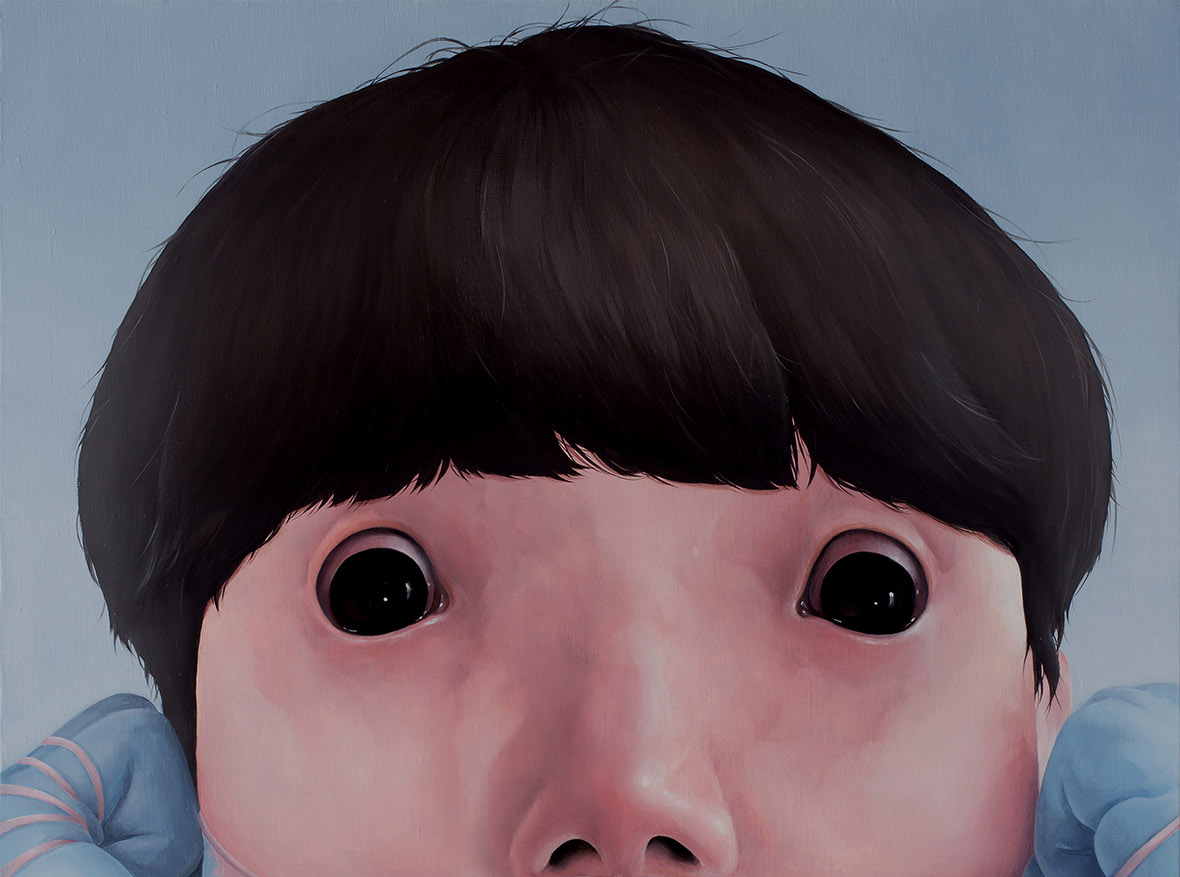
For many viewers, the eyes alone are enough to induce a sense of unease.
But is it the look of desperation that’s found in the eyes of an animal facing imminent death? Or is it the look of excitement that’s found in the eyes of a predator following a successful kill?
Created by Korean artist Moon Chanpil, Prey & Predator is a series of paintings that depicts predator-prey relations through unsettling portraits. On a basic level, the series revolves around predation and the artist’s personal experiences, but closer scrutiny reveals a deeper narrative – the project aims to highlight the disturbing similarities between the behavior of humans and wild animals. “Predators cannot always be predators, nor can prey always be prey,” Chanpil tells us. “All beings are predator and prey at once.”
仅仅一个眼神,就能让你被画面中的恐惧牢牢攫获。
这可能是猎物濒死前绝望的眼神,也可能是捕食者终于果腹时渴求的眼神。
这一系列《猎物和捕食者》(Prey & Predator)的作品,来自韩国的插画家 Moon Chanpil。仅仅直视这系列作品中的眼睛,就会感到一种让人恐惧的力量迎面而来。画布上狩与猎的故事,也不只是个体化的经历,更像是创作者在诠释整个人类社会乃至自然界的普遍法则。“捕食者不可能永远是捕食者,猎物也不可能永远是猎物。所有的生物都既是捕猎者,也是猎物。”Chanpil 说。
As a self-professed nature documentary fanatic, Chanpil’s infatuation with predator-prey relationships can be traced back to his childhood. “I loved seeing scenes of big cats hunting when I was younger; I cheered for their success,” he recalls. “But at the same time, [when I saw the prey], my mind cried out, ‘Run away! Survive!’ Although it was just television, it was sad to see a deer bitten in the neck and watch as the life disappeared from its eyes. I saw the lion’s eyes as he bit down into the deer’s neck as well, and in those eyes, I saw desire and fatigue.”
With scene like this imprinted in his mind, Chanpil began to question the nature of existence. “Why are we designed like this? Is that our world? Just a tragic existence?”
Moon Chanpil 从小就是自然纪录片的忠实粉丝。“当我还是个孩子的时候,我喜欢看着纪录片里大猫狩猎的场面,为他们狩猎的成功而欢呼。这实在很酷。但同时,另一种声音也一样在我脑海中回响——‘快跑!’‘活下去!’” Chanpil 说,“虽然我和这一切隔着电视屏幕,但直面它依然一件很可悲的事。我看到狮子紧紧咬住鹿的脖子,我看到小鹿的生命气息渐渐从它的眼睛里消失;我还看到狮子眼中的欲望,看到了它竭力猎杀后的疲倦。”
所以,现在的 Chanpil 会忍不住想知道,“我们为什么生来如此?这就是我们所处的世界吗?我们就是某种悲惨的存在吗?”
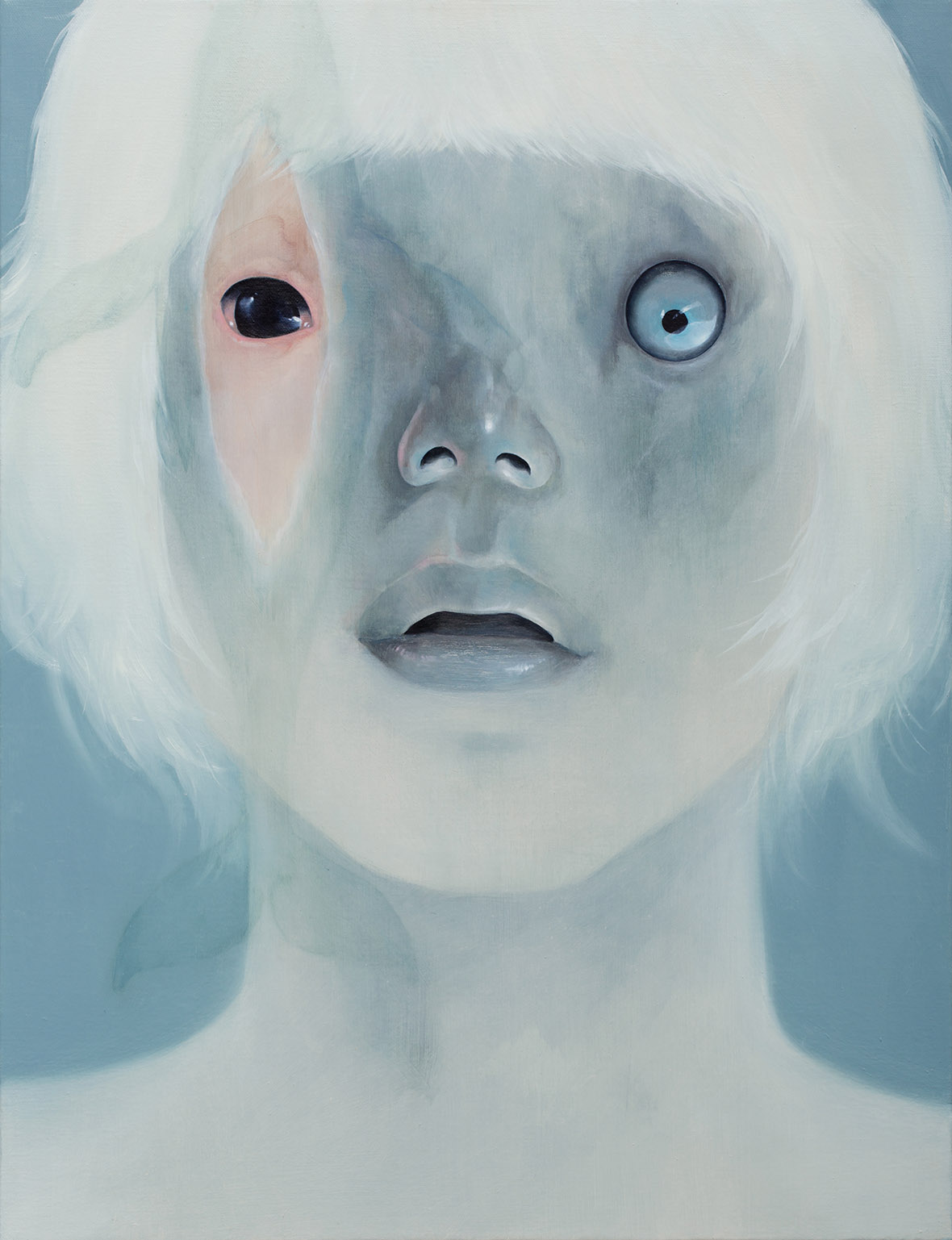
But of course, humans are different from lions and deer. We’re afforded the luxury of not having to be a part of the predator-prey cycle that every other living animal is fated to endure. Humans have escaped the food chain, but we’re the only exception. Other living creatures are unable to escape this vicious circle, and at the core of Chanpil’s paintings, there’s a sense of sadness that comes from this realization. He explains, “As I see the eyes of the dying deer, I feel sadness and empathy. It seems like its very purpose is to be killed and eaten. At the same time, for that lion, whose cruel fate is to kill again and again to survive, I also feel sadness and empathy. By projecting my own emotions through these animal’s lives, I’ve gained insight into the truth or secrets of human life. In my series, the events that occur between prey and predator come from my personal stories, but I think there’s a universality to them. This predator and prey dynamic may be happening within the mind of one individual, or between two individuals, or between an individual and a group, or between two groups of people.”
从某种意义上来说,或许人类和小鹿类和狮子是不同的,人类得以试着避开食物链系统中捕食者与猎物的关系,甚至人为地进行改变。Moon Chanpil 觉得,我们存活在一个“没有任何回旋余地”的世界中,自然系统很少允许像人类这样的例外发生。
“现在,对我来说,最核心的情感反应是‘悲伤’——当我看到小鹿在被狮子咬伤后失去生命,我为之悲伤也为之同情。那只鹿生存的意义,或许就是为了死亡、为了被狮子捕食;而狮子则必须不断捕猎和杀戮才能得以存活,它的命运也一样残酷。” Chanpil 说,“我通过他们的生活投射我自己的情感,在这个过程中洞察人类生活的真相或秘密。在这个系列中,捕食者和被捕食者之间所发生的事,也就是发生在我身上的事。我认为这存在着普遍性。捕食者与被捕食者可能是发生在个人内部,或个人与个人之间,或个人与群体之间,或群体与群体之间的一个事件。”
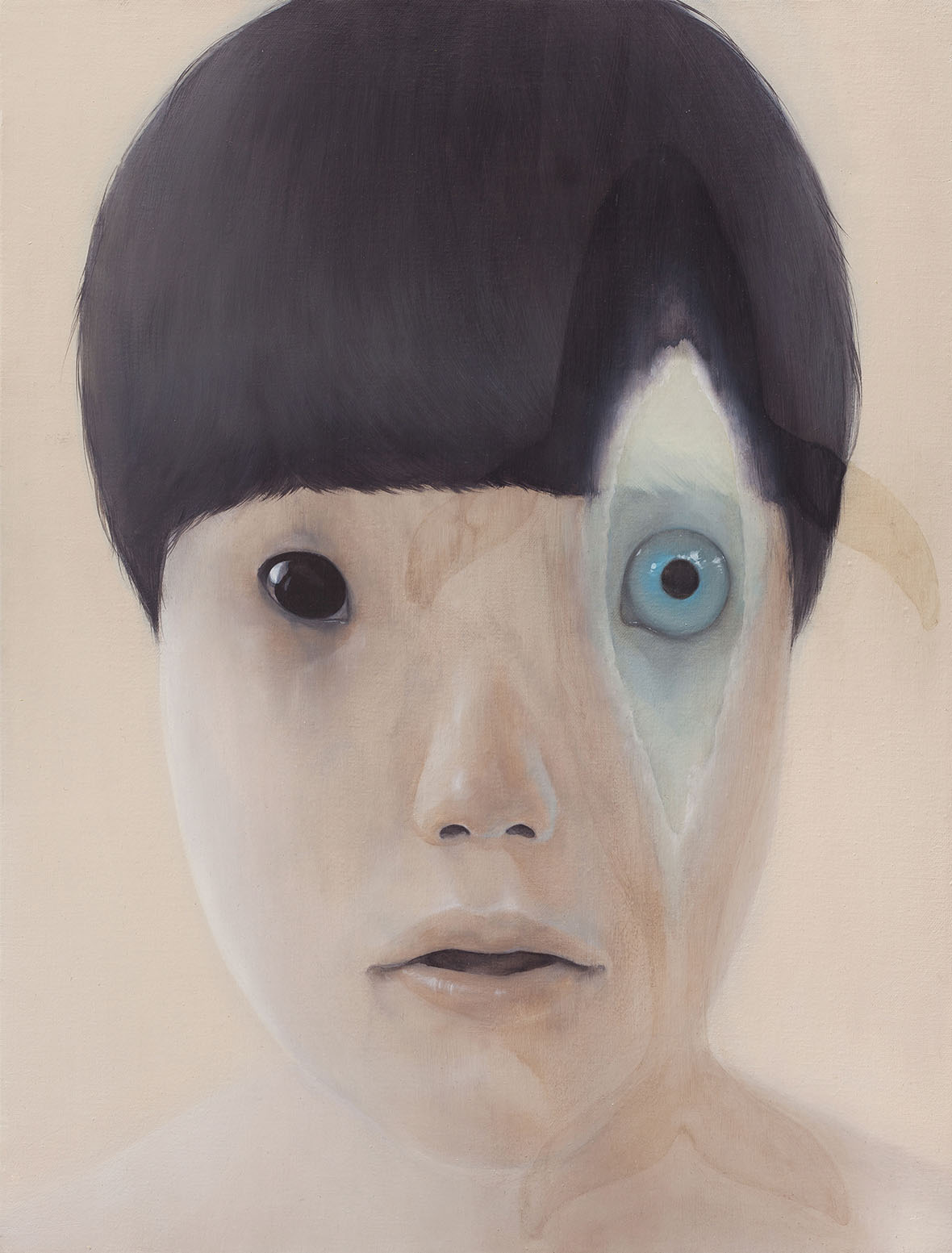
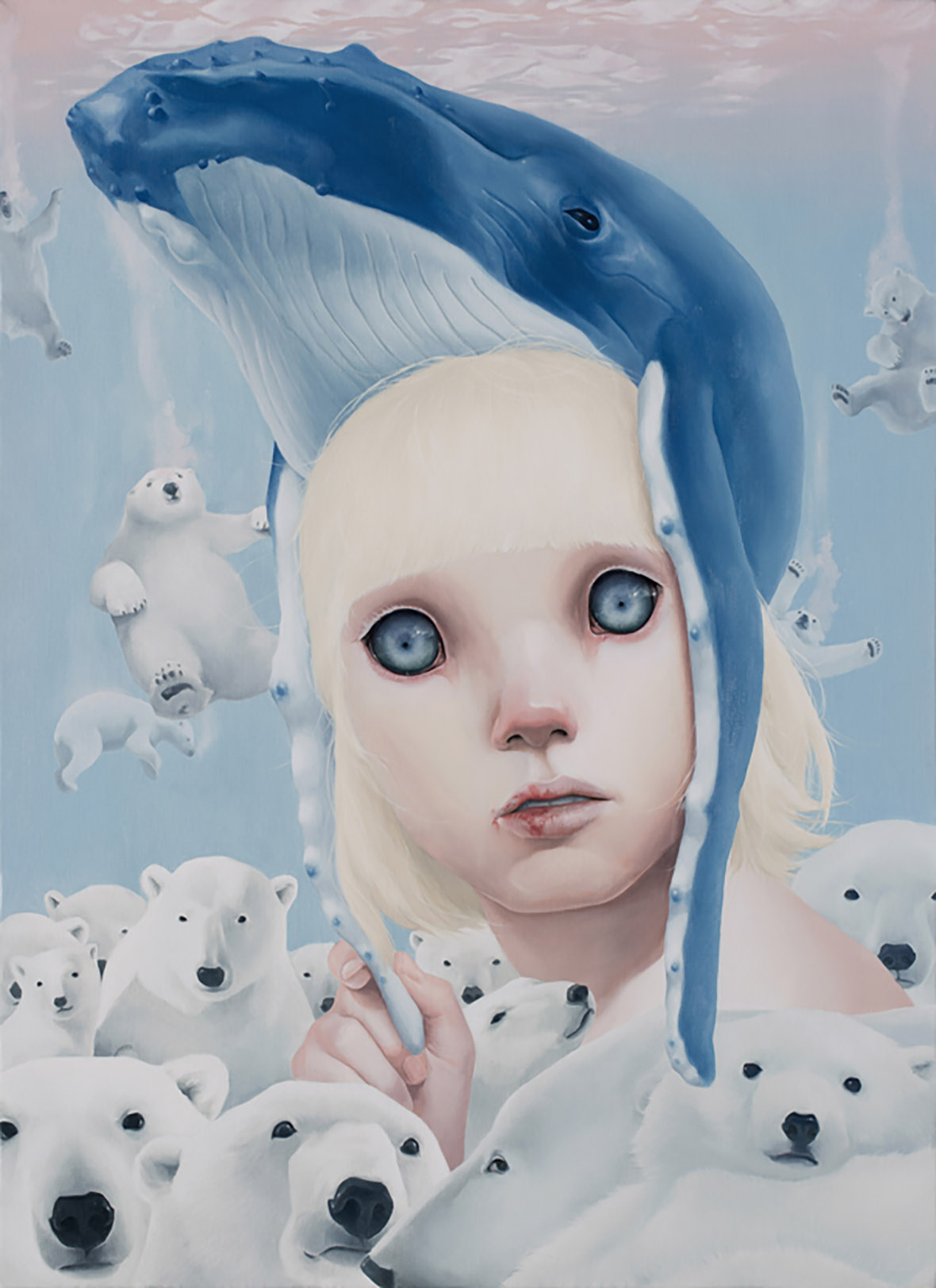
Describing the creative process behind his series, Chanpil tells us, “When I approached the initial character design, I first needed to feel maximum empathy. So I drew a portrait based on my own face rather than creating a fictional character. However, in order to convey the theme of predator and prey more dramatically, I referenced the actual eyes of predator animals and prey animals, using the eyes of cattle or tigers in lieu of my own. For my predator paintings, the character’s eyes are those of the archetypal predator – the tiger. Their mouths are rarely dry of blood, and in a way, I wanted to console them by removing that blood from their mouths. The blood-colored whale symbolizes what’s in the mind of a predator. While whales aren’t typically preys in the food chain, I’ve always thought that they have all the features of prey. They’re slow, kind, beautiful, and solitary.”
“要谈论角色的设计的话,首先,我得展现出极大的同理心。所以我根据我的脸画了一张自画像,而不仅仅创造了一个人物角色来。为了更生动地传达主题,我通过借用真实的掠食动物或猎物的眼睛来设计了人物的眼睛,我通常会大猫和牛的眼睛。比如‘捕食者’,他的眼睛是典型的食肉动物:老虎。老虎的嘴角常会凝结着干血,我想用抹去他们嘴上的血来告慰他们。而一只血红的鲸鱼,则象征着‘猎物’的心灵。虽然鲸并不是食物链中的猎物,但我一直认为鲸具有这样的特性——缓慢、善良、美丽而孤独,满足了所有猎物的特征。”
For each painting, Chanpil taps into his own experiences and memories to convey emotions with depth and authenticity. “When I draw a predator, I like to imagine myself as the predator in the painting as I work on it. When I draw a prey, I like to imagine I’m the prey in the painting. But no matter which role I take, I always feel a sense of sadness.”
“Similar to real life, I like to express emotions with moderation in my work, so the emotions I paint aren’t that extreme. The characters aren’t loudly crying or yelling out in fury. But if the viewers are seeing strong emotions in my work, I believe it’s because they’re reacting to the character’s inner feelings. As I’ve previously said, it’s all rooted in a sense of melancholy – this is a sadness that no being in this world can escape from or get rid of. Aside from this sadness itself, I wanted to express my own feelings of fear that came from this realization. […] Prey & Predator is the world through my eyes. I want to show people the true essence of our world, but not necessarily the visible parts of it.”
在这一系列中,Chanpil 在画布上展现出的思想和情绪相当真实,真实到他无需设计,画布上所展现的内容本身,就已是他全部的思想和情绪。“当我画捕食者的时候,我会想象我是一个捕食者,是捕食者在作画,我就是它;同样地,我画猎物时就会假想自己是猎物本身。而两种角色的表情都很悲伤。”
“就像我自己在现实世界里一样,我更喜欢适度的情绪表达,而不是在工作中将之爆发。所以作品中人物的面部表情并不极端,他们不会大声号哭。但是,如果画中的情感被传递给你为某种极端的感受,我想那是因为你对角色的内在情感作出反应。正如我前面提到的,这种感觉是‘悲伤’。这个世界上没有人能够从这种悲伤中逃离或解脱。‘我们无法动弹。’——我也想借此表达我的恐惧。” Chanpil 说。
“《猎物和捕食者》是我看到的真实世界。我想要透过这个系列去讲述世界的本质,而不是表面上的可见世界。”
